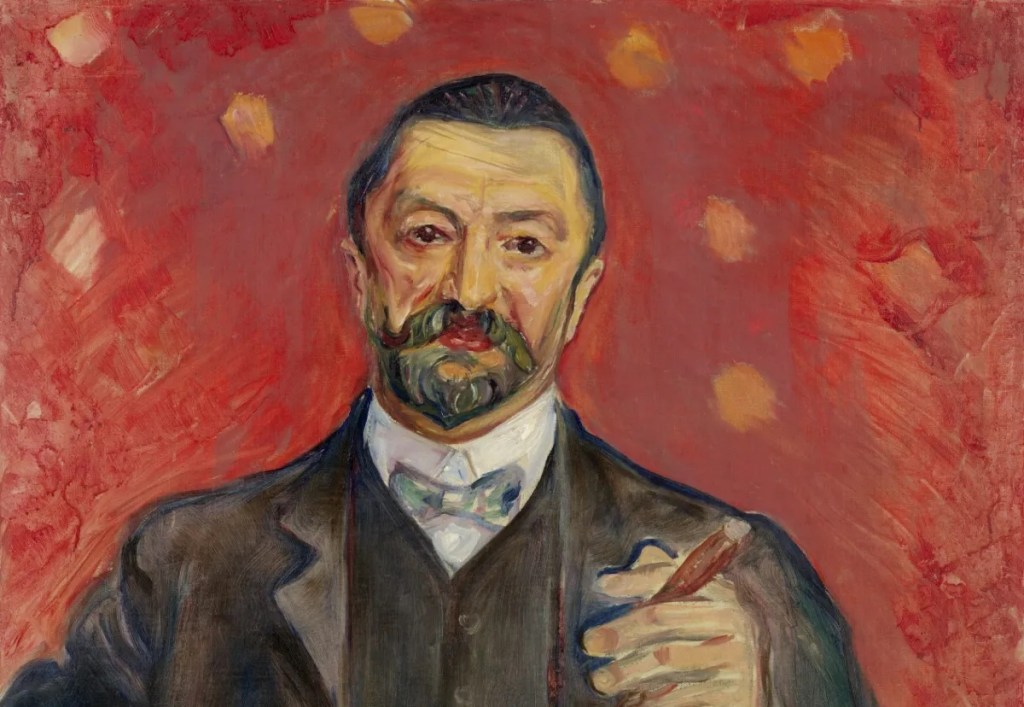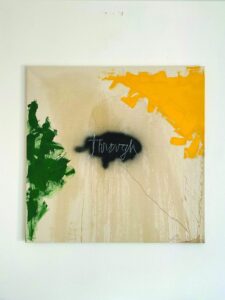Edvard Munch Was a Magician of Light



LONDON — Norwegian painter Edvard Munch is almost a byword for his over-reproduced representation of psychological torment known as “The Scream” (1893). Its grimacing visage and loose, swirling brushwork rendered in a glaringly contrasting palette of saturated orange and blues have seeped into our collective cultural impression of him.
It is fascinating, then, that the National Portrait Gallery’s (NPG) chronological survey of his portraits — reportedly the first of its kind in Britain — reveals an astonishingly accomplished and varied range of technical skill, capable of expressing an equally diverse range of psychological characters and moods. It is a shame that the wall text interjects with overenthusiastic interpretative assertions, which are laugh-out-loud amusing at best and art historically dangerous at worst.
One may be surprised to learn that Munch produced hundreds of portraits, and the number on display here is generous. The range of skill and experimentation is evident from the start. In an early self-portrait from 1882, when the artist was 19 years old, and a portrait of his friend and landscape painter Jørgen Sørensen from 1885, Munch used a more traditionally representational form of faceted modelling — delineating the contours of forms into shaded areas — to create depth and dimension, with naturalistic tones of muted earth and light. A nearby 1886 study of his brother, on the other hand, is a hard-edged linear work characterized by tonally lighter, more saturated block colour; a depiction of his sister in “Evening” (1888) dispels of facets for a more dappled application. Throughout all is a keen understanding of light.

We progress chronologically to Munch’s time fraternizing with bohemian characters in Kristiania (now Oslo), Paris, and Berlin and experimenting simultaneously with lithographs. Here, the swirling, caricatured faces are outlined in single egg-like swoops — such as in his etching of bar punters in “Kristiania Bohemians II” (1895) – sit next to portraits made seemingly of nothing but loose hatching with little care for accurate representation, as in “August Strindberg” (1892). These friends were clearly at the forefront of decadent thinking; Munch’s 1889 portrait of the writer, anarchist, and proponent of sexual freedom Hans Jaeger needs no further explanation as this louche, petulant figure slouches in a murky, smoke-filled café.
Yet further explanation is what the distracting wall labels want to give us, almost comically so: The wall label for arguably the most interesting piece in the show, “Tête-à-tête” (1885), declares that in this image of a couple drinking in a dive, “the glint of the woman’s teeth and her reciprocal gaze suggests the attraction is mutual, reinforcing the bohemian belief in women’s liberation.” It is wildly presumptuous to conclude that Munch intended this specific facial grimace as representative of a whole sociopolitical movement. Incidentally, the lighting of the piece results in an obstructive reflective glare, hiding the subtlety of its muddiness.

These interjections continue to make further unproven assumptions. To declare that “the red background enlivened by patches of yellow is a homage to [Vincent] van Gogh, an artist Munch admired” with regard to a 1906 portrait of physicist Felix Auerbach is, despite historic acceptance that they were contemporaries and knew of each other’s work, ultimately baseless.
Where this becomes most dangerous, however, is the reduction of the philosophy of Friedrich Nietzsche to a single summary line, applied universally to a vast swathe of portraits: Of Munch’s Berlin patrons, the wall label states, “They all shared an enthusiasm for the philosophy of Friedrich Nietzsche and his belief in the creative power of the individual.” Really? All of them unequivocally? And that’s all the explanation we’re getting of an entire lifetime of complex philosophy? The subject of “Ernest Thiel” (1907) is described as “a proud, self-made man, the embodiment of Nietzsche’s ‘will to power’ standing in a rather haughty, defensive pose.” The most interesting element of Thiel’s portrait is the fact that it is unfinished, revealing Munch’s working process. For all the talk of Nietzsche, the NPG missed an opportunity to include his works in the show’s excessively floral, hygge-esque gift shop; that wouldn’t have gone amiss.
Where curator Alison Smith and her team are entirely correct, however, is in their emphasis on the sense of hubris that suffuses these paintings. They rightly point out in the wall text that, “despite the affluence and social status communicated by the portraits, many of those depicted were to experience a dramatic change in fortune after the First World War.” Though the interpretative interjections are distracting, they consistently come as addenda to diligent, informative historical context.
What viewers should come away from this show with is a feeling of the sensitivity and intensity of Munch’s mind and technical working practice, as well as the distinct characters of his sitters, as all good portraits should communicate. One doesn’t need the extra psychoanalytical asides when we have an exceptional display of painterly technique and experimentation that conveys some undeniably compelling societal characters.




Edvard Munch Portraits continues at the National Portrait Gallery (St. Martin’s Place, London, United Kingdom) through June 15. The exhibition was curated by Alison Smith.






